Wondermondo 🢖 World 🢖 Wonders of Asia 🢖 Wonders of Turkmenistan
Territory
Wonders of Turkmenistan
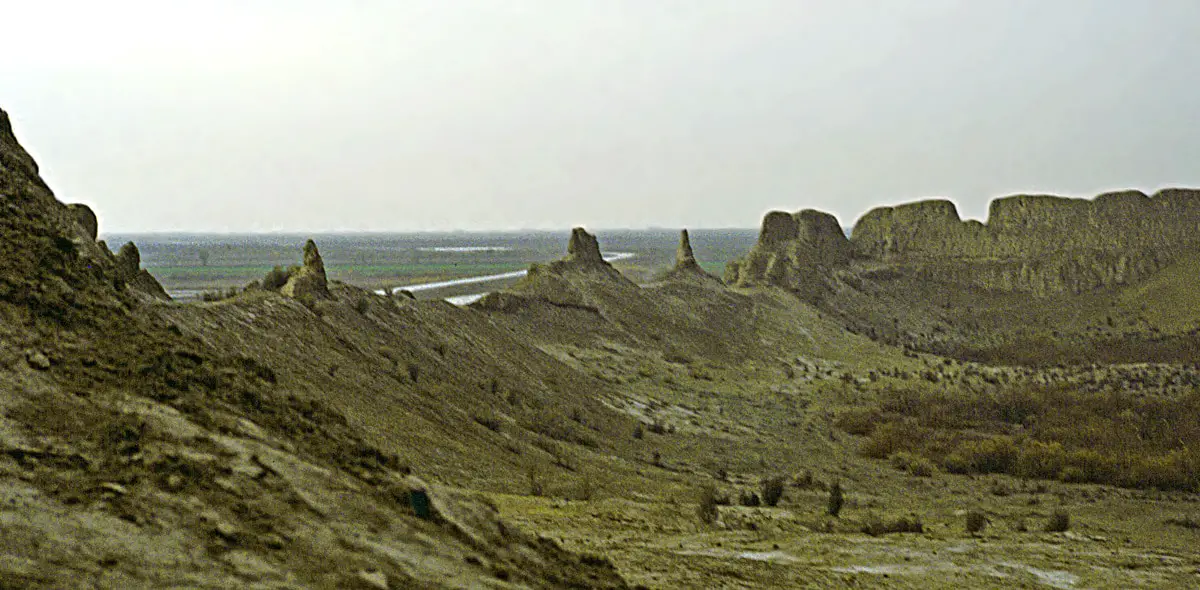
 Highlights
Highlights
Turkmenistan is mostly covered with deserts – but it has not been always like that. In the past here developed some of the earliest cities in the world. The most interesting wonders of Turkmenistan are:
- Ruins of ancient cities and fortresses. Hundreds of hills and crumbling ruins all over the country testify – this country had a great and interesting path. These were not just common cities: Merv was one of the world’s largest cities (largest?) at the beginning of the 13th century but Urgench was a major center of culture, influencing architecture and art in the whole Central Asia.
- Geological heritage linked to oil and gas finds. Turkmenistan has extremely rich finds of oil and gas – and this (as well as human interference) has created interesting and even unique landmarks, such as Door To Hell and Korpedje Fire Lake.
Map with the described wonders
If you see this after your page is loaded completely, leafletJS files are missing.
 Top 25 wonders of Turkmenistan
Top 25 wonders of Turkmenistan
Geological wonders
Door To Hell (Darvaze burning gas field)
Dasoguz (Daşoguz)
Man-made collapse doline, a collapsed cavern with a diameter of some 70 m and depth of some 20 m. It formed during the exploration of petrochemical resources in 1971 and has been burning since then with bright flames.
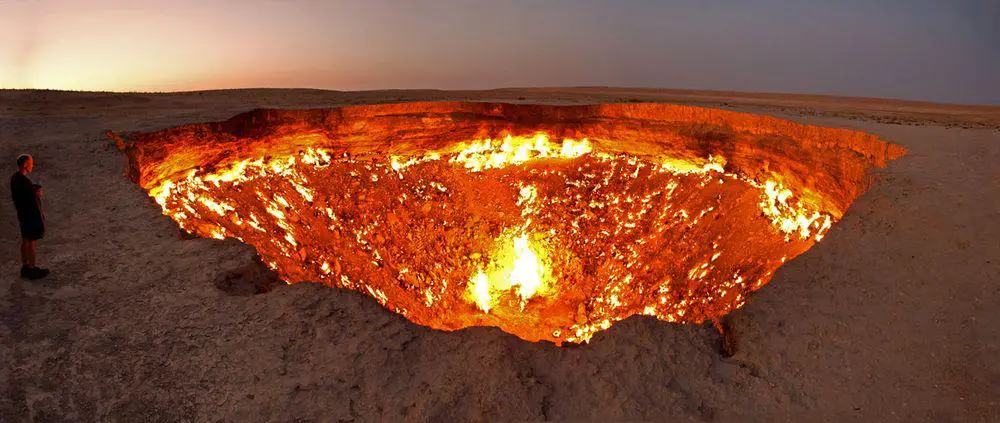
Kap Kutan cave
Lebap
Gorgeous cave systems with enormous crystals of aragonite and gypsum. Some calcite crystals are almost 2 m long but aragonite crystals form something similar to a snow-white forest where one can get lost. The total length of the cave system exceeds 80 km, the longest cave is Kap Kutan II – 57 km, and the cave is up to 1,017 m deep.
Korpedje Fire Lake
Balkan
Stormy lake with a fire fountain in the middle. This is an abandoned oil well that, most likely, started to burn in 2002.
Yangikala canyons
Balkan
Dry, colorful badlands with impressive canyons. Cliffs are more than 60 m tall.
Hashim-Oyyk cave (Hoshmoyuk Cave)
Lebap
Approximately 10 km long cave that is adorned with beautiful aragonite and gypsum crystals.
Western Porsygel and Pink Porsygel
Balkan
Active mud volcanoes. Pink Porsygel has muddy pink color but Western Porsygel has thermal water.
Kov-Ata Cave (Baherden Cave)
Ahal
Cave with large thermal lakes, a popular tourist destination. Length – 250 m, depth – 69 m. Lake is 75 m long, and up to 26 m deep. The temperature in the lake is 37° C.
Biological wonders
Sumbar floodplain forests
Ahal
In the middle reaches of the Sumbar river is located a floodplain forest with some of the world’s richest genetic pools for subtropical fruit and nut-bearing trees.
Plateau of the Dinosaurs (near the village of Khodga-Pil)
Lebap
One of the best collections of fossilized dinosaur tracks in the world. In total more than 3,000 dinosaur tracks have been found, the largest are 70 cm long. The longest trackways reach 200 m.
Eroylanduz depression
Ahal
Arid area with rich finds of fossils of Eocene fauna including remnants of beetles, eggs of ostriches and others.
Mandragora turcomanica find near Garygala
Balkan
The only find of the extremely rare Mandragora turcomanica. Only some hundreds of these plants remain in wild. Most likely it has very potent medical properties but this knowledge, even if ancient people knew it, is lost now.
Archaeological wonders
Merv
Mary
Once a magnificent oasis city on Silk Road. The settlement was established in the 3rd millennium BC but flourished in the 8th century – 1221 when it briefly was one of the largest cities worldwide. Today are seen remnants of four-walled cities close to each other. Today are seen remnants of several walled citadels close to each other – Erk Kala, Gyaur Kala, and the medieval Sultan Kala.
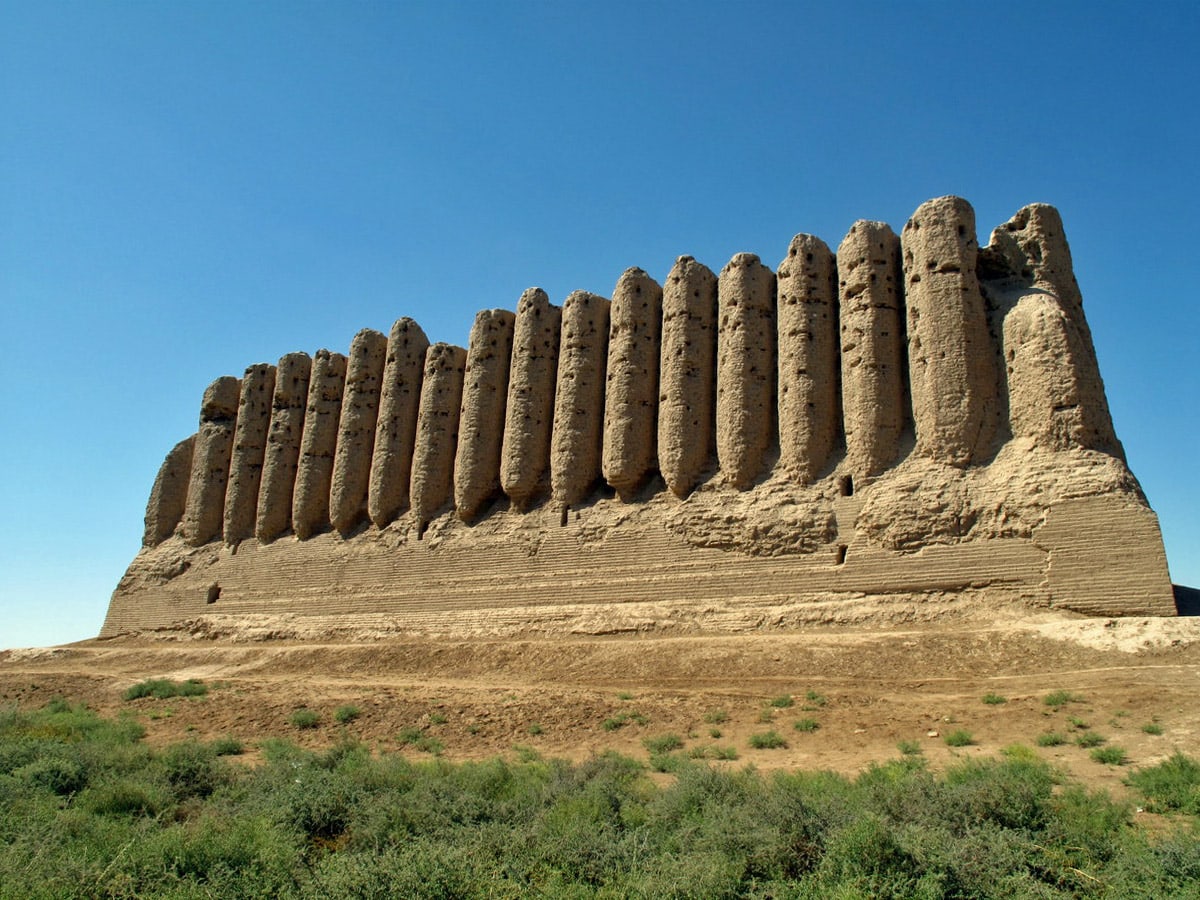
Gonur-Tepe
Mary
Ruins of a very old city from 2500 BC. The site contains remnants of a fortification wall and temples with fire altars. Citadel was 100 by 180 m large. In this region have been found numerous other settlements from this time.
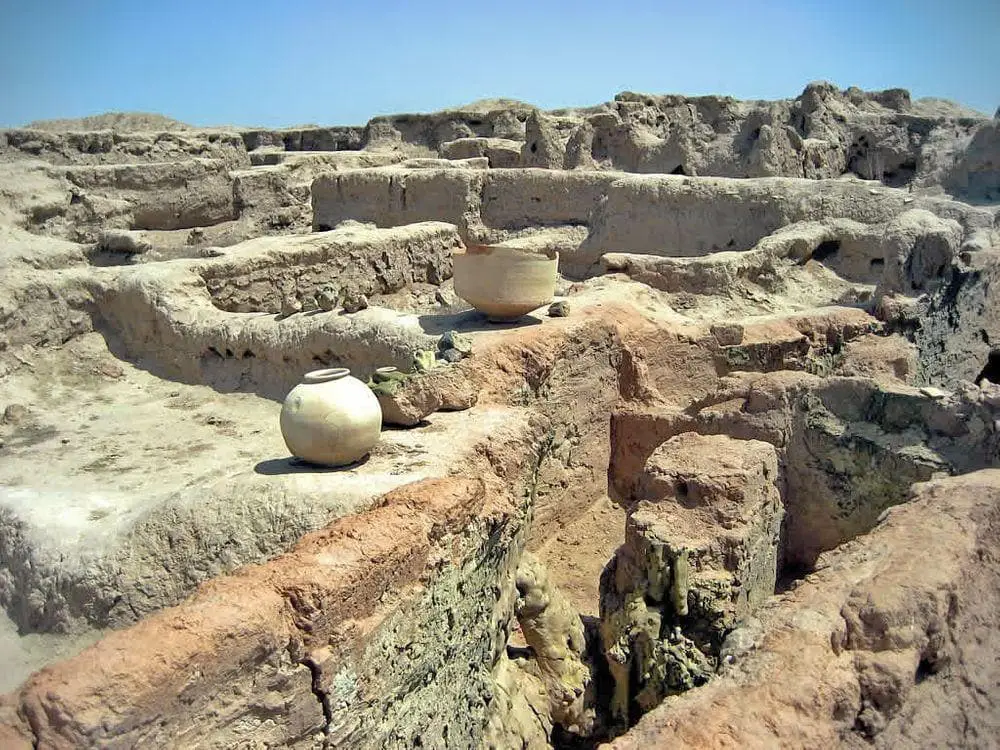
Kyz Qala
Mary
Two royal palaces in Merv, built in the 8th century AD. Palaces are built from mud but look very impressive even after 1,200 years. Especially impressive is Grant Kyz Qala.
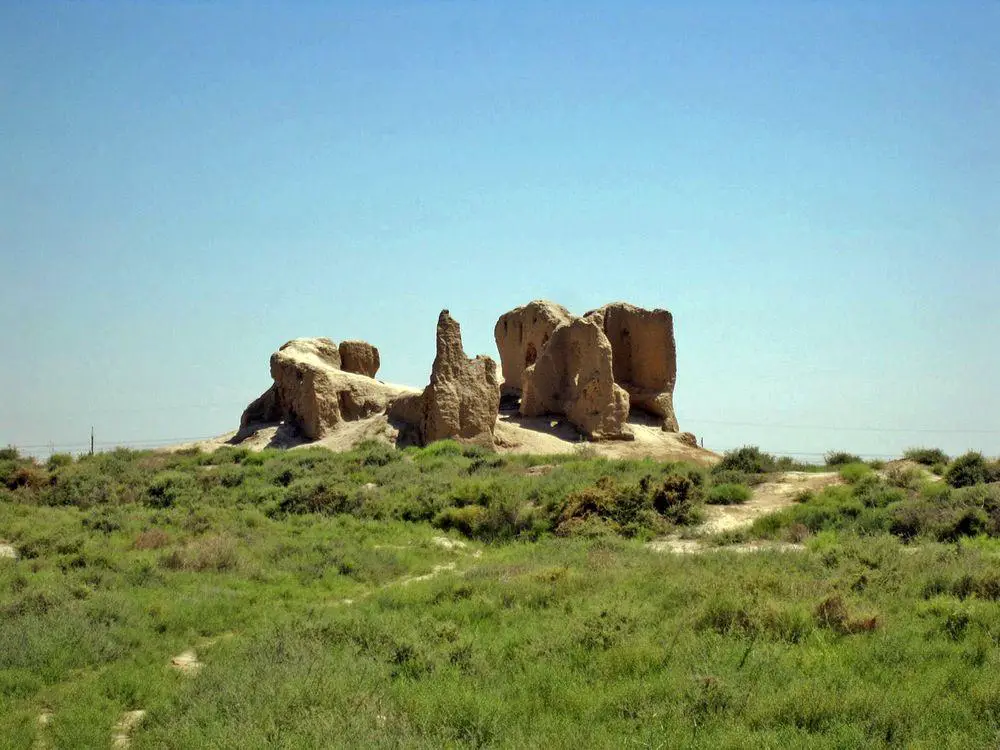
Nisa
Ashgabat
Ruins of the ancient capital of Parthians with two important Parthian fortresses. Here have been found multiple artifacts of Hellenistic culture. Flourished in the 3rd century BC – 3rd century AD. The capital city was destroyed by an earthquake in the first decade BC but later it was renewed.
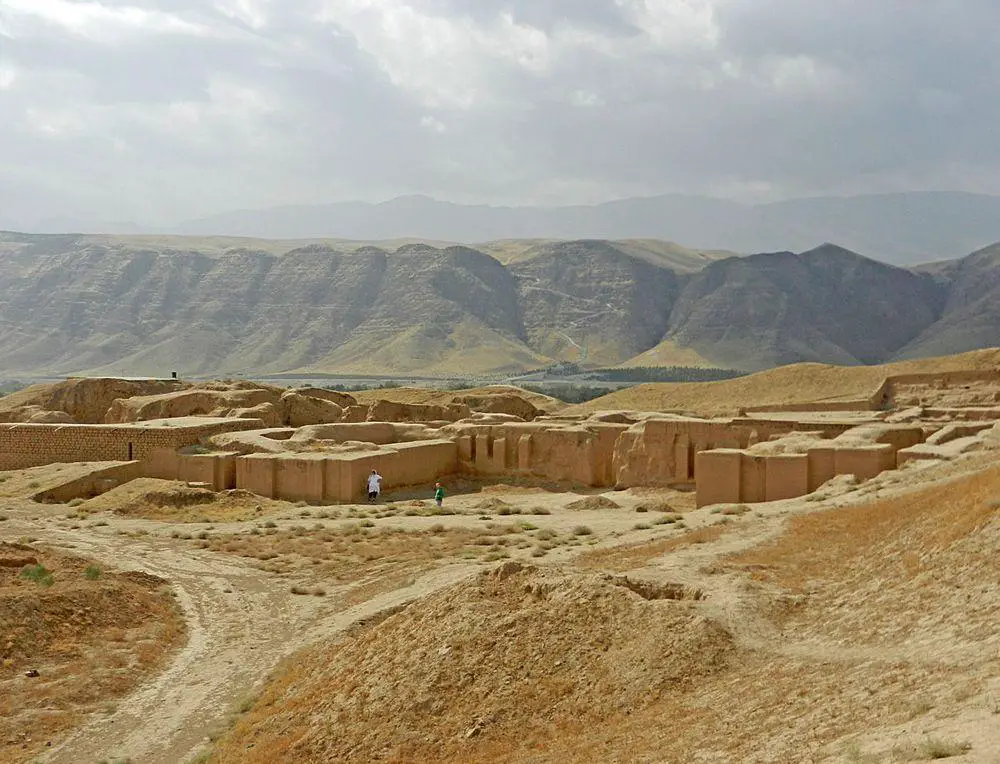
Ulug Depe
Ahal
Remnants of an early town that flourished in the late Neolithic – early Bronze Age (the 6th millennium BC) and existed until the 1st millennium BC. A massive citadel from bricks was built here in pre-Achaemenid times (before the 6th century BC). Now the hill, which covers the city, is some 30 m tall.
Kharoba Koshuk
Mary
Remnants of a Nestorian church near the ancient city of Merv. This enormous, 41-m-long structure was built before the 5th century AD.
Altyndepe
Ahal
Site of a very old city that was built and inhabited in the Bronze Age, in the 3rd – 2nd millennia BC. This place had contact with the Late Harappan culture. In the city are located remnants of an early ziggurat. Found models of two-wheeled carts from around 3000 BC – oldest depictions of wheeled transport in Central Asia.
Chilburj
Mary
Ruins of a Parthian fortress and Sassanid town. The fortress is 260 by 200 m large. The walls of this massive fortress have been partly preserved. The fortress was founded in the 2nd – 3rd century AD and in the 5th – 7th century AD it was a lively caravan city that existed until the Mongol invasion.
Architecture wonders
Turabek-Khanum Mausoleum
Dasoguz (Daşoguz)
Sophisticated structure – mausoleum for the wife of ruler Kutlig-Timur. Most likely built in the 14th century. The building has beautiful tile mosaics.
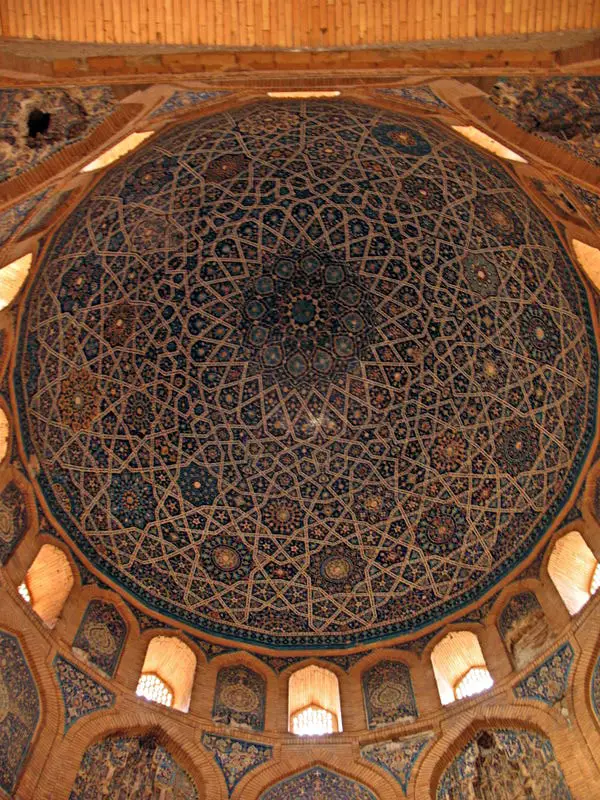
Yekedeshik Caves
Mary
System of man-made underground passages, made in the 14th or 15th century (?). Almost nothing is known about the history and purpose of the building. Caves have been created on five levels and have numerous cave rooms (more than 100). One room has a vaulted ceiling with ribs and something similar to an altar at one end.
Kutlug-Timur Minaret
Dasoguz (Daşoguz)
60 m tall minaret that was built in the 11th or 12th century AD.
Mishrian (Dehistan)
Balkan
Ruins of medieval caravan city. Founded in the 3rd century BC, flourished in the 10th – 14th century. The city has massive fortifications – it was enclosed in a double wall. Near the city is Meshat cemetery with fine mausoleums. Especially impressive is the Shir Kabir mausoleum from the 10th century AD.
Turkmenistan Tower
Ashgabat
211 m tall communications and observation tower, built in 2011. Tower has a very unusual and somewhat kitschy architecture with a giant star-shaped part at its base.
Alem Cultural and Entertainment Center
Ashgabat
An impressive building of civic center that was built in 2012. The structure is 95 m tall and has very unusual architecture. The structure contains the world’s largest Ferris wheel with a diameter of 47.6 m.
 Recommended books
Recommended books
Turkmenistan: The Bradt Travel Guide
Turkmenistan is one of the few countries of any size left on the globe which is not the subject of a dedicated travel guide in English (major competitors cover Central Asia as a region). Yet, lying as it does at the heart of the Silk Road route, it is a historically and culturally rich land. Travelers can gain insight into the heritage with the clear itineraries supplied of the major archaeological sites of Merv and Konye Urgench and coverage of Turkmen pilgrimage shrines. For travelers looking to explore further afield, this guide spans the whole country comprehensively, including little-known sites such as the Yangakala canyon and the flaming crater at Darvaza.
Turkmenistan: Adventures on the Silk Road
Turkmenistan is a remarkable country with beautiful and rarely visited ancient ruins from the Silk Road. Highlights include the ancient city of Merv, once the largest city on earth, the striking ruins of Gurganj, the marble and gold of modern Ashgabat, and the unique experience of the ever-burning desert gas field, the ‘Gate of Hell’. The rulers behave eccentrically; building gold statues of themselves, renaming bread after a Presidents’ mother, banning beards, gold teeth, Facebook, and lip-synching. Far Flung Places Guides provide an insight into the key places to visit, with historical context, travel tips, and humor.


